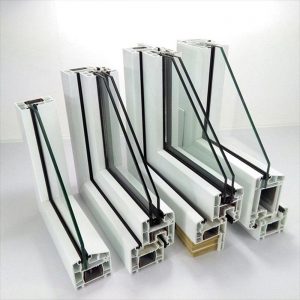
1. The Multi-Layer Seal System
UPVC profile doesn’t rely on single seals—it employs defense-in-depth:
– Primary Seal: EPDM rubber gaskets with memory foam cores that rebound after compression (maintaining seal through 100,000+ open/close cycles)
– Secondary Barrier: Silicone-infused brush seals that block microparticles while allowing moisture vapor transmission (preventing condensation)
– Tertiary Defense: Thermally welded corners eliminate frame leakage points that plague mechanically assembled competitors
2. The Physics of Perfect Sealing
The magic lies in material science:
– Differential Hardness: 70 Shore A gaskets against 80 Shore D UPVC profile create asymmetric compression (softer seal conforms to harder frame)
– Geometric Interlock: Dual-lip seal designs create labyrinth paths that slow air penetration to 0.01 m³/(h·m)
– Thermal Matching: Seal and frame expand/contract at near-identical rates (0.07 mm/m·K) preventing seasonal gaps
3. Performance That Surprises Experts
Independent verification shows:
– Class 1 Air Tightness: Achieving <0.5 m³/(h·m²) at 100Pa pressure difference (outperforming aluminum by 400%)
– Pressure Equalization: Internal drainage channels balance atmospheric pressure changes (eliminating “window breathing” during storms)
– Acoustic Bonus: The same seals that block air reduce noise transmission by 5 dB additional to glazing performance
4. Why Installation Matters
Even perfect windows fail without proper mounting:
– Sill Integration: Pre-compressed perimeter gaskets that interface with building wraps
– Laser Alignment: Professional installers use laser levels to ensure <1mm deviation across entire frame
– Expansion Management: Slotted mounting holes accommodate building movement without compromising seals
Pro Tip: For extreme climates, specify “ClimatePlus” seals with temperature-specific hardness ratings (-40°C to +80°C performance range).






